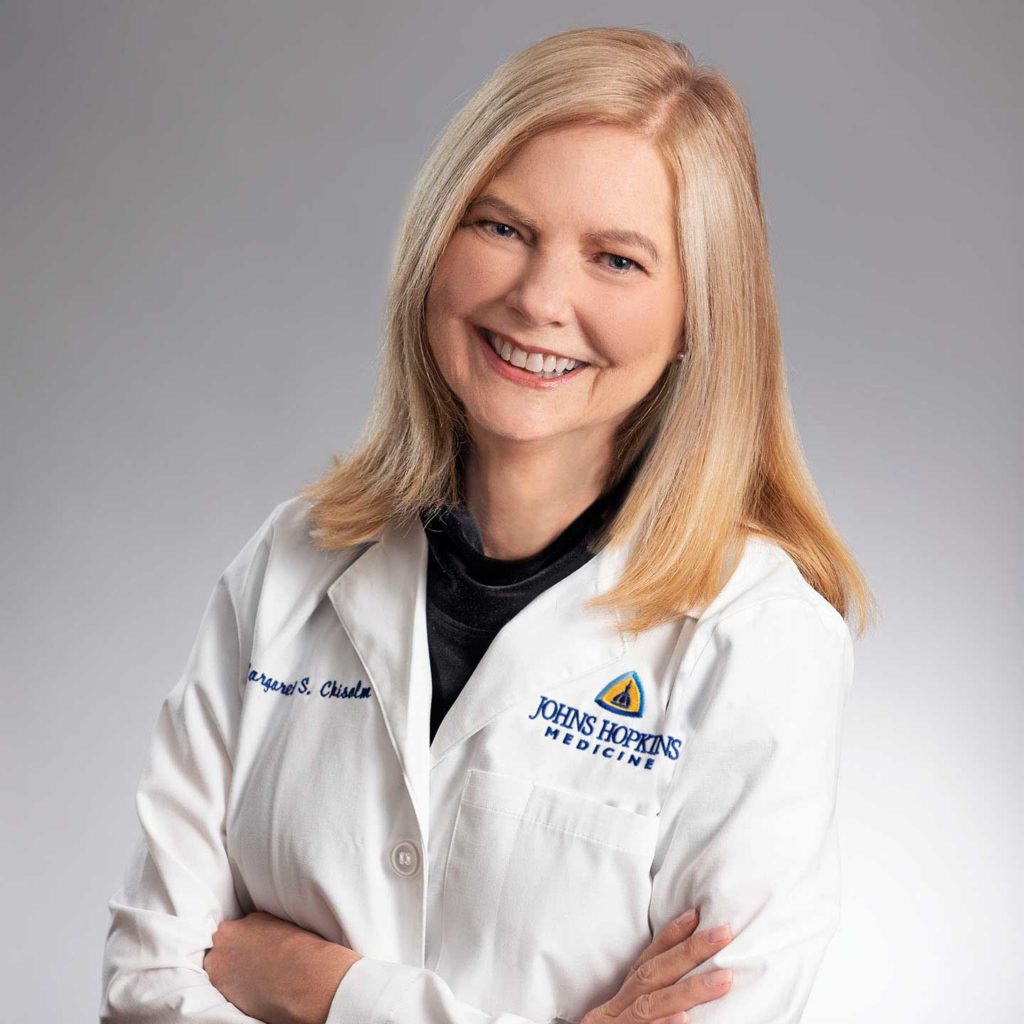Takeaway
By understanding what a good life looks like for each patient, clinicians can move beyond merely treating diseases to helping people flourish.

Lifelong Learning in Clinical Excellence | November 22, 2022 | 3 min read
By Margaret Chisolm, MD, Johns Hopkins Medicine
What does it mean to be human? To lead a good life? These are the “big questions” pondered by philosophers for thousands of years. Aristotle used the word “eudaimonia”–translated into English as “flourishing”–to describe the state in which all aspects of a person’s life are good. Flourishing has its root in the Latin florere, meaning “to bloom, blossom, flower” and is defined by the Oxford English Dictionary as growing or developing in a healthy or vigorous way.
But what is health? Since 1948, the World Health Organization has defined health as “a state of complete physical, mental, and social well-being and not merely the absence of disease or infirmity,” which sounds a like “flourishing!” Yet previous measures of well-being have not included health (or character and virtue). Dr. Tyler VanderWeele, who directs the Human Flourishing Program at Harvard, wondered if it was possible to “measure” flourishing, and do so in a way that included physical health–as well as character and virtue–and was valid around the world. To that end he sought first to identify domains of flourishing, around which people from different cultures and philosophical and theological traditions might reach consensus. He was looking for aspects of a good life that are universally desired and each an end in itself, and ended up describing five domains of human flourishing (recognizing that these things do not exhaust the scope of flourishing but are a part of it):
1. Happiness and life satisfaction
2. Physical and mental health
3. Meaning and purpose
4. Character and virtue
5. Close social relationships
VanderWeele also developed a short index that can be used to measure flourishing at a given point in time. I invite you to take this measure yourself, and consider the utility of the index for your patients to track their level of flourishing over time. The measure also provides an opportunity to identify areas for change and growth.
In VanderWeele’s review of large rigorous longitudinal, epidemiologic studies, he identified four pathways to flourishing that are common and have large effects on the domains of flourishing: family, work, education, and religious community. These four pathways are not exhaustive (other pathways may have important effects but may be less common) nor all necessary (one can “flourish” even in the absence of one or more of these pathways). And almost all were affected by the pandemic.
In a study comparing flourishing in January 2020 and at the height of the pandemic in June 2020, flourishing decreased overall and in each domain except character and virtue. These drops were worse in the young and old than those in middle age, however by January 2022, flourishing scores were more or less the same–on average–as they were before the pandemic in all age groups except young adults (ages 18-25), who–as a group–are not doing well across multiple domains of well-being. Young adults report being less happy and healthy, having less meaning and poorer relationships, and having more struggles with character. VanderWeele and others have speculated that this lack of well-being may be due in part to crises in meaning (as religions and philosophies have traditionally supplied these, but participation has declined substantially, especially among youth); geopolitical events and concerns (e.g., the pandemic itself, global warming, war; technology and social media use (on average, and especially for high rates of use, the effect on well-being is negative; and social media use is considerably higher among young people).
So how can clinicians help themselves and their patients of all generations to thrive? On a societal level we can encourage deeper engagement with the most fundamental questions of life; discipline our social media use; and work to rebuild our relationships and communities. On a more individual level, we can share evidence-based activities and “interventions” that have been shown to promote well-being. These include practical cognitive exercises (e.g., practice of radical gratitude, imagining your best possible self), actions (e.g. practicing acts of kindness, volunteering), engagement in relationships and institutions (e.g., religious service attendance, marriage), and ways to address mental distress (e.g., seeking professional help, self-help).
Flourishing is what we are seeking as individuals and as a society. Health –that “state of complete physical, mental, and social well-being and not merely the absence of disease or infirmity”–is part of flourishing. Clinicians have a role to play in not only treating disease but in ensuring that they and their patients flourish and live their best lives.
Dr. Margaret Chisolm is the author of “From Survive to Thrive: Living Your Best Life with Mental Illness.”
This piece expresses the views solely of the author. It does not necessarily represent the views of any organization, including Johns Hopkins Medicine.

